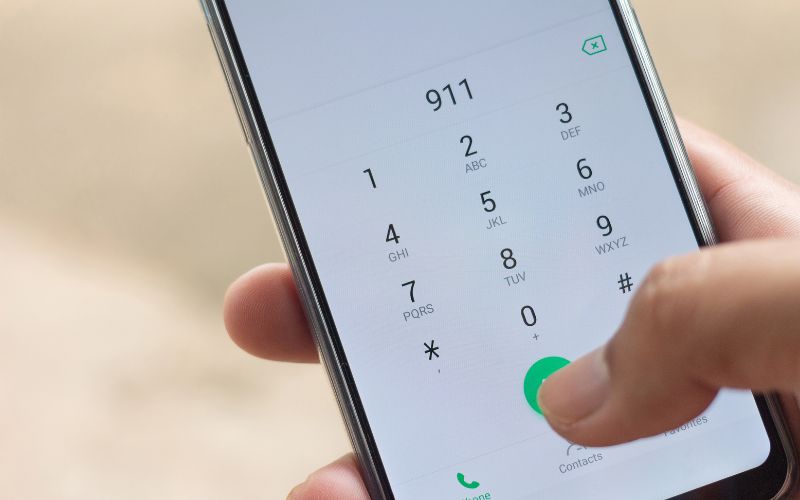
- Details
- By Elyse Wild
The Cayuga Nation Reservation spans 64,000 acres in central New York state. According to the latest Census Data, approximately 2,500 people reside within its boundaries. The Cayuga Nation Police Department (CNPD) was established in 2018. Today, it has 20 officers and is led by Colonel Mark Lincoln, a former member of the New York State Police.
The Nation’s police department has concurrent jurisdiction under federal law over crimes committed by Native Americans — meaning they can try.
They also have the authority to detain non-Native Americans who commit crimes within the Reservation until the state, county, or local agency takes responsibility for the detainee.
The suit claims was filed on behalf of Cayuga Nation and Cayagua Nation citizen Clint Halftown against the county of Cayuga, NY; The County of Seneca, NY; and Mark Bilistreri, Director of the New York State Office of Interoperable & Emergency Communications. Defendants claim that the Counties repeatedly denied them access to its emergency 911 system while granting access to all other public safety entities within their borders. The result, the Nation says, is that CNPD is left dangerously unaware of emergencies occurring on the Reservation until other entities have responded.
The claim highlighted two instances in which the exclusion from the Counties’ 911 system delayed the CNPD’s response: a house fire in April 2023 and a domestic dispute in 2024. Because the police department is located on the Reservation and therefore positioned to be the quickest responders to emergencies, such delays endanger the health and safety of reservation residents and, the defendants allege, violate their constitutional right to equal protection under the law. Further, the plaintiffs put forth that the Countie’s continued refusal to transmit 911 calls to the CNPD violates the Cayuga Nation’s sovereign right to enforce tribal law.
In January 2024, the Nation sought meetings with the countries to request that emergency 911 calls originating within the Nation Reservation territory be transmitted to CNPD, but the Defendant Counties refused to grant the request. The Plaintiffs allege that Cayuga County indicated that it might consider transmitting emergency 911 calls to the CNPD only if the Nation agreed to pay for the service.
The suit states in part:
“Every request the CNPD has made to be allowed access to the E911 systems has been met either with quibbling about the cost—even though, upon information and belief, no other agency has paid a fee to connect—or outright silence.”
The plaintiffs claim the Counties’ actions fly in the face of the State Interoperable & Emergency Communications (SIEC) policy to broaden the interoperability of 911 systems throughout the state across all public safety entities. The SIEC issued a New York Statewide Interoperability Plan” (“SCIP”) in January 2024 that included a letter from Balistreri, reading in part:
“[a]s we continue to enhance interoperability, we must remain dedicated to improving our ability to communicate among disciplines and across jurisdictional boundaries. With help from safety practitioners statewide, we will work to achieve the goals set forth in the SCIP and become a nationwide model for statewide interoperability.”
More Stories Like This
Native News Weekly (August 25, 2024): D.C. BriefsUS Presidents in Their Own Words Concerning American Indians
Indigenous Actor Elaine Miles Reports Detention by Alleged ICE Agents
Happy Thanksgiving from Native News Online
Coming Up on Native Bidaské: Behind the Animation: Joey Clift Talks “Pow” and Native Storytelling
Help us tell the stories that could save Native languages and food traditions
At a critical moment for Indian Country, Native News Online is embarking on our most ambitious reporting project yet: "Cultivating Culture," a three-year investigation into two forces shaping Native community survival—food sovereignty and language revitalization.
The devastating impact of COVID-19 accelerated the loss of Native elders and with them, irreplaceable cultural knowledge. Yet across tribal communities, innovative leaders are fighting back, reclaiming traditional food systems and breathing new life into Native languages. These aren't just cultural preservation efforts—they're powerful pathways to community health, healing, and resilience.
Our dedicated reporting team will spend three years documenting these stories through on-the-ground reporting in 18 tribal communities, producing over 200 in-depth stories, 18 podcast episodes, and multimedia content that amplifies Indigenous voices. We'll show policymakers, funders, and allies how cultural restoration directly impacts physical and mental wellness while celebrating successful models of sovereignty and self-determination.
This isn't corporate media parachuting into Indian Country for a quick story. This is sustained, relationship-based journalism by Native reporters who understand these communities. It's "Warrior Journalism"—fearless reporting that serves the 5.5 million readers who depend on us for news that mainstream media often ignores.
We need your help right now. While we've secured partial funding, we're still $450,000 short of our three-year budget. Our immediate goal is $25,000 this month to keep this critical work moving forward—funding reporter salaries, travel to remote communities, photography, and the deep reporting these stories deserve.
Every dollar directly supports Indigenous journalists telling Indigenous stories. Whether it's $5 or $50, your contribution ensures these vital narratives of resilience, innovation, and hope don't disappear into silence.
 The stakes couldn't be higher. Native languages are being lost at an alarming rate. Food insecurity plagues many tribal communities. But solutions are emerging, and these stories need to be told.
The stakes couldn't be higher. Native languages are being lost at an alarming rate. Food insecurity plagues many tribal communities. But solutions are emerging, and these stories need to be told.
Support independent Native journalism. Fund the stories that matter.
Levi Rickert (Potawatomi), Editor & Publisher

